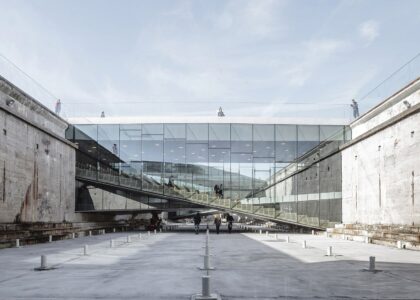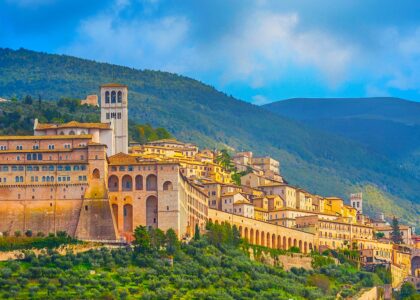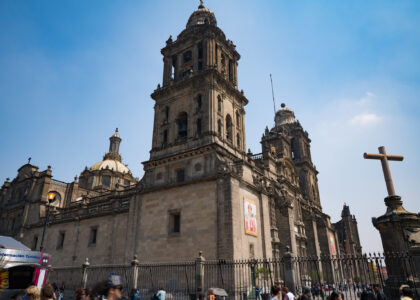The Cathedral of Santa Maria del Fiore (Florence Cathedral):
One of the most recognizable symbols of Florence, the Cathedral of Santa Maria del Fiore (known as the Duomo), is the heart of the city’s skyline. Completed in 1434, the cathedral’s striking dome, designed by Filippo Brunelleschi, is an architectural masterpiece that revolutionized Renaissance architecture. The cathedral’s facade is adorned with intricate marble sculptures and vibrant mosaics, while its towering bell tower, designed by Giotto, offers panoramic views of the city.
Visitors flock to the Duomo not only for its visual grandeur but also for the chance to climb to the top of the dome. The climb is challenging, but the reward is worth it: sweeping views of Florence’s rooftops, the Arno River, and the surrounding Tuscan hills. Inside the cathedral, visitors can admire the beautiful frescoes and religious art, including Giorgio Vasari’s famous Last Judgment. The Duomo is not just a religious site, but a symbol of Florence’s cultural and architectural dominance during the Renaissance.

The Uffizi Gallery:
The Uffizi Gallery is perhaps the most famous art museum in Florence and one of the most visited in the world. Situated along the Arno River, this museum houses an extraordinary collection of Renaissance art that includes works by Italy’s greatest masters, such as Leonardo da Vinci, Michelangelo, Botticelli, and Raphael. The gallery’s name, which means “offices” in Italian, refers to the building’s original function as a government office before being converted into a museum by Francesco I de’ Medici in the late 16th century.
The Uffizi’s vast collection is housed in a series of grand rooms, each showcasing masterpieces that reflect the evolution of European art from the 12th century to the 17th century. Iconic works such as Botticelli’s The Birth of Venus and Leonardo da Vinci’s Annunciation attract art lovers from around the world. The gallery also features impressive sculptures and decorative arts, making it a must-visit for anyone interested in the cultural history of Florence and the Renaissance.
Palazzo Vecchio:
Located in the heart of Florence’s historic center, the Palazzo Vecchio is a stunning example of medieval architecture and a symbol of the city’s political power. Originally built in the 13th century as the residence of the city’s rulers, the palace is now a museum and the seat of the city’s municipal government. Visitors can explore the ornate rooms and chambers that once housed Florence’s governing bodies, as well as the magnificent Salone dei Cinquecento (Hall of the 500), a vast hall decorated with frescoes by Giorgio Vasari and a collection of artworks depicting the Medici family’s history.
One of the most notable features of the Palazzo Vecchio is its impressive tower, which stands 94 meters tall and offers spectacular views of Florence. Climbing to the top of the tower provides an unparalleled perspective of the city, including the surrounding Piazza della Signoria and the nearby Ponte Vecchio bridge. The Palazzo Vecchio is a must-see for history buffs, art lovers, and those interested in the political legacy of Florence.





